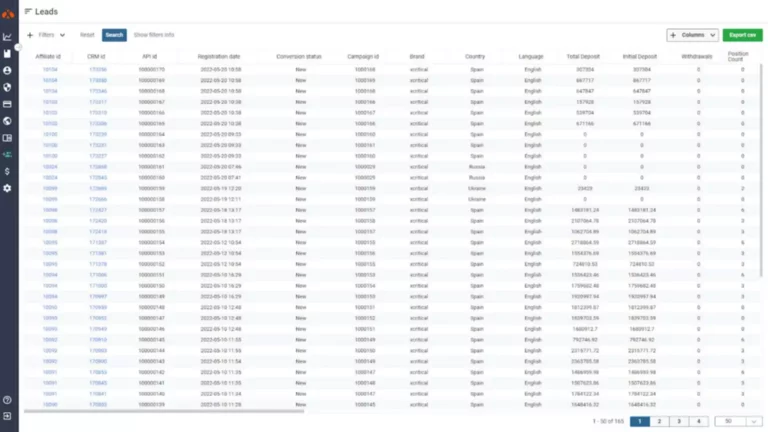Content
If the first trade is a buy or long position, the second trade (which closes the open position) is a sell. If the opening trade was a sell or short position, the closing trade is a buy. A CFD broker’s credibility is based on reputation, longevity, and financial position rather than government Mining pool standing or liquidity. The depth of liquidity offered by a CFD LP can vary to a large degree, as can the connectivity options available.
What is the difference between CFD trading vs spread betting?

CFDs offer several advantages over conventional trading methods, providing an appealing opportunity to achieve substantial profits with a lower capital outlay. Nevertheless, despite their potential as a profitable alternative to traditional trading techniques, CFDs how to choose liquidity provider also carry inherent risks and challenges. An overnight funding charge will be charged from your account if you maintain a daily CFD position open past the daily cut-off time.
Understanding the Underlying Asset

CFDs might also provide more leverage and flexibility, but they come with higher risks due https://www.xcritical.com/ to market volatility. Forex trading is generally more straightforward and might suit those who prefer focusing on currency markets. CFD trading involves contracts that pay the difference between the opening and closing prices of an asset. Spread betting, on the other hand, is a form of wager on the direction of an asset’s price movement. It’s tax-free in some jurisdictions like the UK and doesn’t provide direct market access.
What are the Characteristics of CFD Liquidity?
A CFD is essentially an agreement between a trader and a broker to exchange the difference in the value of a particular asset between the time the contract is opened and when it is closed. The underlying asset can be anything from commodities like oil or gold to company shares, indices, or even cryptocurrencies. However, it’s important to note that when trading CFDs, you’re not actually buying or selling the asset itself – you’re simply speculating on the price movement. It is a type of derivative that uses leverage and allows market participants to profit from the distinction between a position’s opening and closing prices in a particular financial instrument.
What is Liquidity in the Context of CFDs?
- CFD liquidity can’t be ignored as the structure of CFD asks for somewhat more liquidity as the leverage is different and the core transaction is just being based on the basis of the margin of profit and loss.
- If you believe the price of the stock will rise, you take a ‘long’ position and buy the CFD.
- This extensive access allows traders to diversify their portfolios and explore various markets without having to own the underlying assets.
- By short selling the same shares as CFDs, you can attempt to counterbalance some of the potential loss from your existing portfolio.
- For a total calculation of the return or loss from a trade, you’d also subtract any charges or fees (commission, overnight funding charges, guaranteed stop loss) you paid.
- Capital.com offers tight spreads, no commissions, fast order execution, high privacy and security standards, educational tools, and current news items.
There is no time restriction on the deals you make, unlike when trading CFDs on the stock market. Selecting the right CFD trading platform is critical to success in today’s fast-paced financial markets. Platforms like B2TRADER, eToro, and IG exemplify the blend of innovation, reliability, and functionality needed to cater to diverse trading strategies and preferences. Whether you are an individual trader looking for a user-friendly platform or a brokerage aiming to deliver multi-asset trading capabilities, the options are vast and varied. In addition to market analysis, CFD trading platforms prioritise user convenience and risk management.
Those who embrace the latest technology, including API connectivity are aspects that should be considered, as is solid experience in their field. More important advantages of CFD trading that impact traders’ decisions to trade CFDs include the following. Despite the low number of trading pairs, there is an opportunity for profit. At the beginning of CFD cryptocurrency trading, it is advisable to use only one or two trading pairs while you are still getting the hang of it.
The number of participants in a market and the extent of their trading activity can also significantly affect CFD liquidity. Specifically, the presence and activity of liquidity providers, such as large financial institutions like banks or hedge funds, play a crucial role. A contract for differences (CFD) allows traders to speculate on the future market movements of an underlying asset without actually owning or taking physical delivery of the underlying asset. Due to the OTC mode of CFD liquidity provision, a key factor in sourcing a suitable LP is that, from a credit risk perspective, they should be an experienced and reliable counterparty. A CFD LP should also provide a wide range of markets and reliable continuity in terms of pricing and depth of liquidity. An increasing number of traders would like 24/5 access to major markets which, although fairly typical in Forex, is less usual with CFDs.
This means that traders can potentially profit from both rising and falling markets. The underlying asset in a CFD trade can be any financial instrument, including stocks, indices, commodities, currencies, and even cryptocurrencies. EToro is known for its social trading platform, eToro allows users to follow and copy the trades of successful investors. It offers a simple interface, a wide range of markets, and a demo account for practice. While it amplifies potential profits, it also magnifies the impact of losses, and traders can lose more than their initial investment. CFD trading doesn’t involve owning the actual assets, which means traders can speculate on price movements without the complexities of traditional ownership, such as storage or dividend concerns.

This can lead to higher trading costs, slower trade execution, and increased price slippage, negatively impacting a trader’s profits. On the other hand, account liquidity refers to the level of liquid assets available in a trader’s account. In a CFD market, these liquid assets serve as a margin – the initial deposit required to open a position. Therefore, the availability of sufficient funds in a trader’s account to meet margin requirements and cover potential losses is crucial. B2TRADER Integrates seamlessly with leading liquidity providers and crypto exchanges.
Traders can employ various trading strategies using CFDs, such as trend following, scalping, swing trading, and arbitrage. These strategies aim to capitalize on short-term price movements and market inefficiencies. Additionally, regularly reviewing and adjusting risk management strategies can help minimize potential losses and protect capital in volatile market conditions.
A good platform ensures fast trade execution with minimal latency, reducing the risk of slippage and ensuring orders are filled at the intended price. Technical analysis is vital in CFD trading, and a suitable platform offers interactive charts, technical indicators, and drawing tools. These features help traders identify trends, patterns, and potential entry and exit points, improving decision-making.
The amount mirrors the cost of the capital your provider has effectively lent you to open a leveraged trade. For share CFDs, the contract size typically represents one share in the company you are trading. So to open a position that copies purchasing 500 shares of company X, you’d purchase 500 Company X CFD contracts. This is another way CFD trading is more similar to traditional trading than other derivatives, such as options. If the trader believes the asset’s price will increase, their first trade will be a buy or long position, the second trade (which closes the open position) is a sell. Conversely, if the investor thinks the asset’s value will decline, their opening trade will be a sell or short position, the closing trade a buy.
CFDs are versatile due to their large range of currencies and time periods. The difference between the contract’s opening and closing prices is exchanged for the same amount. In order to diversify their assets, traders increasingly seek them and investors are becoming more interested. The liquidity providers let traders use the leverage to get the net benefit. It also supports risk management which is a rare quality of the CFD trading market.
As for CFD contracts, the number of traders is fewer, while contracts are offered for a wide range of assets (FX currencies, digital assets, etc.). This is why a reliable CFD liquidity provider is among the highly demanded factors for a brokerage company. Liquidity is crucial for tradable assets to ensure that transactions are executed quickly and cost-effectively. Market liquidity describes how easily assets can be bought or sold in a market, such as a national stock exchange or a local real estate market, without causing significant price changes. Prospective brokers and traders should seek LPs that offer broad and diverse services.